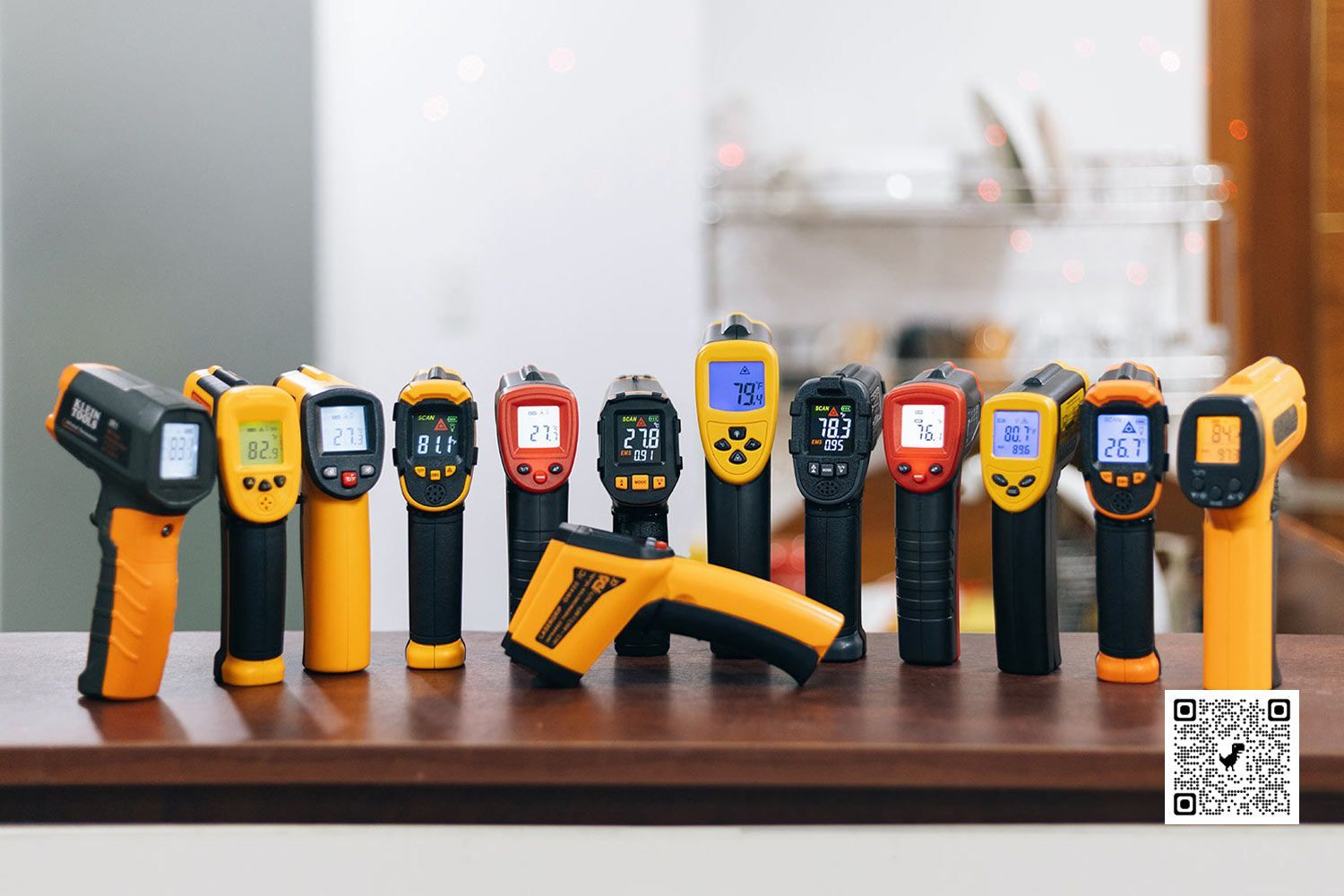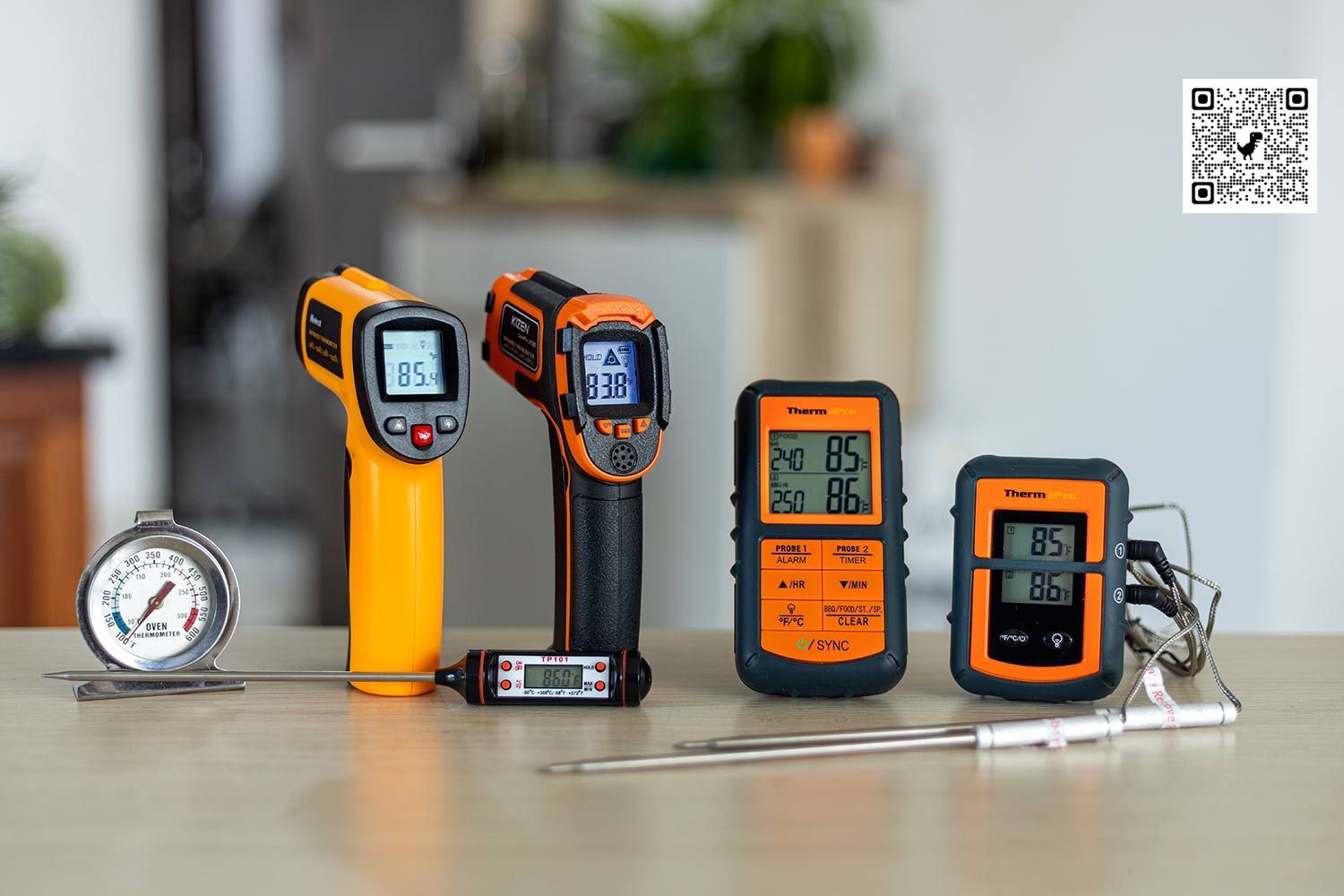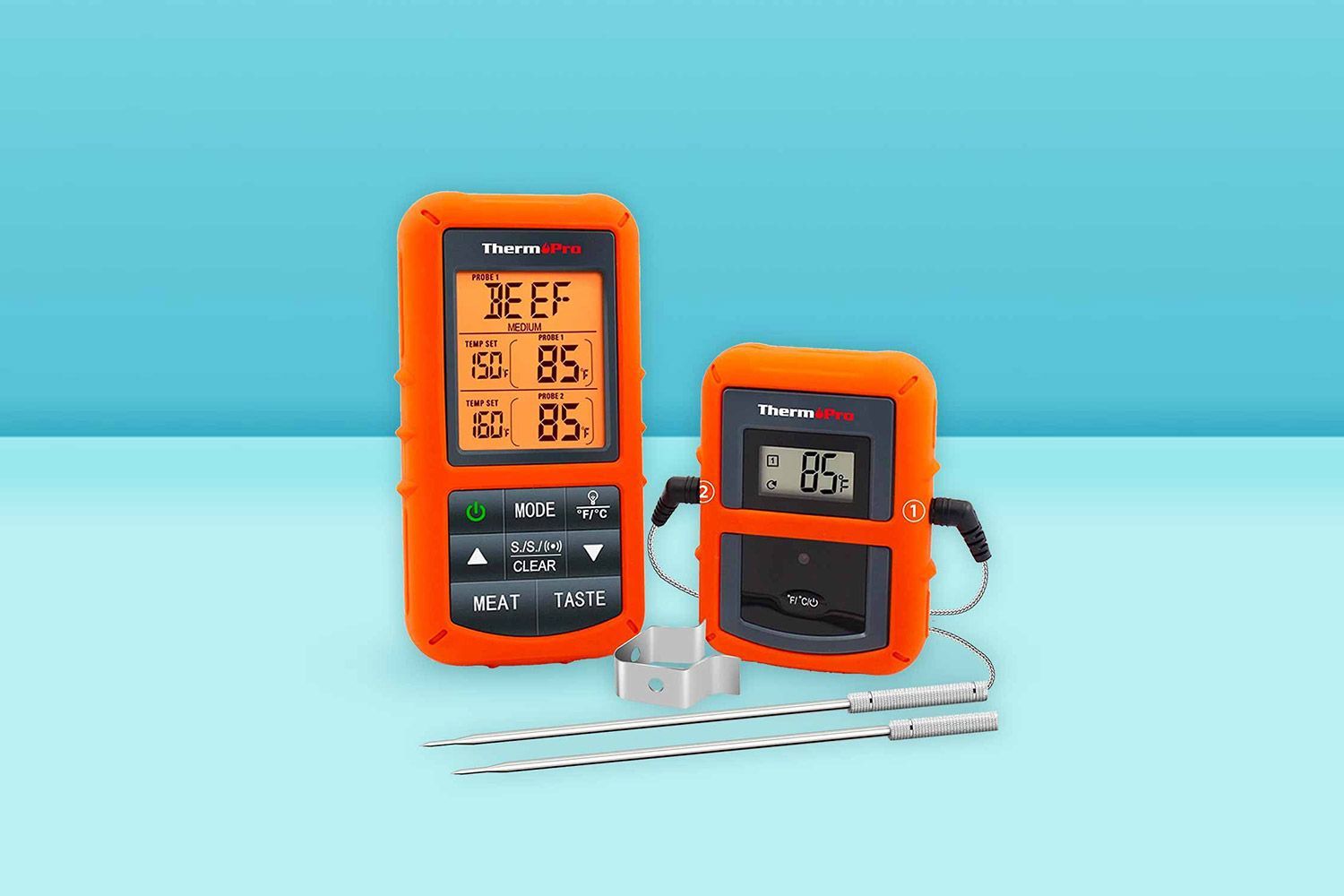Our recommendations are made independently. We may receive commissions from purchases made via our links.
Things to Consider When Choosing an IR Thermometer
An infrared (IR) thermometer is a must-have in any kitchen. But how do you find one that’s not just accurate but also affordable and built to last? The answer’s simpler than you might think!
Choosing the right infrared (IR) thermometer might appear simple at first, but it's more complicated than you might imagine, especially when you want to make the most of your purchase and want a model that doesn’t just have great accuracy but also affordability and durability.
The good news is you don't have to be an expert to spot a quality thermometer. Just keep these points in mind as you browse!
Measurement accuracy
This is the most important part of our test: how accurately the thermometer can measure the temperature of a surface. Our testing methodology for IR thermometers contains two sections to evaluate the accuracy: a cold test using a chest filled with icy water and a hot test using hot cooking oil.
Temperature range and emissivity settings
For kitchen-grade thermometers, the range typically spans from -58°F to 1,122°F (-50°C to 600°C).
The thermometer will display an error message if the surface temperature falls outside of this range. You should select a model with a functional range that matches how you expect to use it.
One factor that affects what surfaces you can measure is emissivity. Emissivity refers to how surfaces emit IR energy, and it is expressed as a numerical value between 0 and 1.0.
A black-body object, which reflects no energy, has an emissivity of 1.0.
Many IR thermometers feature an option to adjust their emissivity settings. They give you more accurate results if you select the emissivity setting that closely approximates that of the object you’re measuring.
Models that don’t allow users to modify the emissivity setting are fixed at 0.95.
Distance-to-Spot Ratio
The Distance-to-Spot (D:S) ratio refers to the relationship between the distance from the sensor to the target and the diameter of the measurement area. A thermometer's claimed D:S ratio can help us determine how big its target must be when measured from a given distance.
For example, if we say a thermometer has a D:S of 10:1, then the diameter of the area that it can measure is equal to around one-tenth the distance between the thermometer and the object. So, if you were to measure an object from 10 inches away, the sensor would collect thermal data from a target area 1 inch in diameter.
Thermometers with higher D:S ratios can sense the temperature of smaller areas from greater distances.
Build quality
Since IR thermometers are industrial tools, they’re often built to last. Most are constructed from shockproof plastic that can withstand drops and impacts. A good IR thermometer shouldn’t need replacement for years.
Display and interface features
Every IR thermometer has a display panel on the back. This main interface will tell you the temperature readings and the current settings.

Most models feature black-and-white LCD panels. Some even include a backlight that can be toggled on and off for use in dark conditions.
However, there are also premium thermometers on the market that boast color LCD panels. One such example is the Sovarcate HS980E.
Another noteworthy feature is the laser emitter. It's important to note that the laser itself doesn't measure the object's temperature. It’s there to show you exactly where the IR sensor is pointing.
While most models have a single-dot laser emitter, a few project more unique patterns. For instance, the Mecurate IR thermometer sports a 13-point laser emitter, with the outer dots forming a circle. This circle shows you the measurement area’s diameter.



